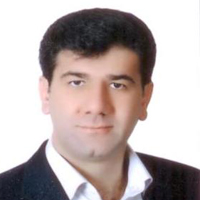Phosphorus fractionation in relation to algal growth (Scenedesmus Obliquus) in western river sediment of Urmia Lake basin
Author(s):
Abstract:
Background And Objectives
Phosphorus is a finite resource and an essential nutrient for sustaining all forms of life in aquatic environment. It was also found in various chemical forms which might be gradually released into water column and exacerbate eutrophic condition in rivers and lakes. Thus, P fractionations provide useful insight into risk posed by P-associated sediments to aquatic environment. There is little information available regarding P chemical forms and its bioavailability in aquatic ecosystems in Iran and there was limited number of publications regarding the evaluation of P forms release from river sediments. The published reports and field observations clearly insist on the phytoplankton growth and some dense algal blooms occurring during years with low water in river sediments. Thus, evaluation of P in aquatic environments by algal bioassay and threats of losing biodiversity could be essential.Materials And Methods
Thirty four river sediments from seven main rivers of the Urmia Lake basin were taken from depth of 0-10 cm for algae (Senedesmus Obliquus) bioavailable P evaluation by sequential chemical extraction. Phosphorous pools in these sediments extracted using operationally defined method that includes as exchangeable (EXCH-P), iron and aluminum oxide-bound (Fe/Al-P), calcium bound (Ca-P) and residual P (RES-P). Principle component analysis was conducted to determine the important properties and chemical forms of P in sediment samples. Algal bioassay was carried out to distinguish the bioavailable P fractions. Hierarchical cluster analysis and Pearson simple correlation were applied for selection of the samples of algal assay and determining bioavailable P fraction, respectively.Results
Generally, sediments had coarse texture with high amount of silt and very fine sand. Principle component analysis indicates that particle and carbonate-related properties have significant role in determination of sediments properties. The average rank order of P extraction by sequential extraction were, Ca-P > RES-P > Fe/Al-P > EXCH-P for all rivers except the Simineh Chai. Simineh Chai sediments had higher concentration of Fe/Al-P than RES-P, indicating possible pollution in the river. There was significant correlation between Fe/Al-P (r = 0.947, P Conclusion
Analysis of P fractions in sediments by sequential chemical extraction shows that Fe/Al-P fraction provided higher potential bioavailability and due to significant correlation with algal growth is proper indicator to evaluate river health and eutrophication of Urmia Lake. River sediment of Urmia Lake had high ability to retain P in Ca-P fraction which could be recalcitrant P pool for algal growth. Keywords:
Language:
Persian
Published:
Water and Soil Conservation, Volume:24 Issue: 3, 2017
Page:
95
magiran.com/p1748841
دانلود و مطالعه متن این مقاله با یکی از روشهای زیر امکان پذیر است:
اشتراک شخصی
با عضویت و پرداخت آنلاین حق اشتراک یکساله به مبلغ 1,390,000ريال میتوانید 70 عنوان مطلب دانلود کنید!
اشتراک سازمانی
به کتابخانه دانشگاه یا محل کار خود پیشنهاد کنید تا اشتراک سازمانی این پایگاه را برای دسترسی نامحدود همه کاربران به متن مطالب تهیه نمایند!
توجه!
- حق عضویت دریافتی صرف حمایت از نشریات عضو و نگهداری، تکمیل و توسعه مگیران میشود.
- پرداخت حق اشتراک و دانلود مقالات اجازه بازنشر آن در سایر رسانههای چاپی و دیجیتال را به کاربر نمیدهد.
In order to view content subscription is required
Personal subscription
Subscribe magiran.com for 70 € euros via PayPal and download 70 articles during a year.
Organization subscription
Please contact us to subscribe your university or library for unlimited access!



